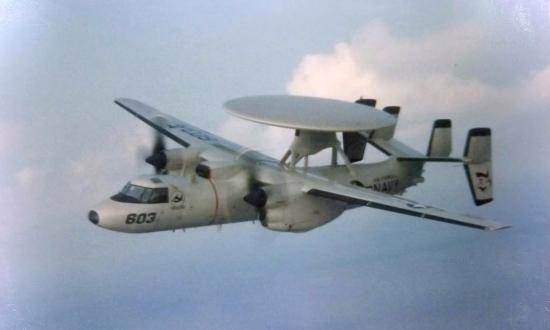In a time of fewer ships and shrinking budgets, would a strike group commander appreciate having an extra destroyer every night for just a couple thousand dollars? That depends on whether the Navy’s disparate warfare communities can understand each other’s needs and capabilities.
From the advent of aircraft carriers, naval aviation has required surface combatants to follow closely in the carrier’s wake as a plane guard, to pick up people and things that fall off the flight deck. When helicopters showed up in the 1950s, they picked up part of the task, but the Navy continues to run surface ships in the wake like it was 1940.
Even today, the carrier Naval Air Training and Operating Procedures Standardization (NATOPS) manual and naval air’s carrier officer of the deck manual require stationing the plane guard ship in the unenviable lifeguard station spot, known to most surface warriors as “LIMA 4, 1,000 yards directly astern!” Fortunately, prudent commanding officers discount this doctrine of bygone years and, for lack of any standardization, add an extra 2,000 to 4,000 yards of spacing, because . . . well, just because.
But the Navy still is using multibillion-dollar destroyers as lightbulbs for the carrier’s landing signal officers (LSOs) on dark nights. The carrier aviation community created the title and task of “horizon reference unit” (HRU) and then awarded the accompanying surface ship this chore—which the LSO’s own NATOPS manual states can be done by a helicopter or even a series of Mk 58 marine markers.
Given that HRU is an extemporaneous contrivance, and that carrier air wing and ship’s company do not communicate well, the stationing of plane guard and HRU among the carriers is variable at best, ranging from 2,000 to 6,000 yards astern—and directly under the ear-splitting noise of the aircraft less than 900 feet above, approaching the carrier on the final bearing. What is consistent, though, is that the capabilities as well as the focus of the equipment and personnel of a warship assigned the duty are significantly curtailed. Air-search sensors are sectored and refocused, and subsurface sensors are retracted. The human focus is on each carrier’s unique kind of reset turn and dance maneuver, to avoid a catastrophic Belknap-like collision by dragging the surface combatant around like a pull toy.1 As well, we should not ignore that the average carrier officer of the deck has no prior experience with multiship formation maneuvering.
So if the Navy is short of helicopters and the Mk 58 marine marker inventory is low, why not give the LSOs a small drone with a light at the cost of a couple thousand dollars that they can operate and put where they need it for a horizon reference? That would free a warship to operate as a warship 10 to 15 miles away, within UHF range, and still meet the spirit of carrier NATOPS plane guard requirements. According to the carrier NATOPS, when one plane guard helicopter is airborne and one helicopter is in Condition III, a surface ship is only required to be within UHF radio range when the carrier is outside range of a divert landing field.
Stop holding that warship on a short leash and give the asset back to the strike group. If a plane guard helicopter is on station within 10 nautical miles at night, that should be fine for ships, too. Using UAV/drone technology for the HRU role would be far more efficient, cost-effective, and organic to the carrier.
1. Assigned as tactical air navigation beacon in 1975, the USS Belknap (CG-26) collided with the USS John F. Kennedy (CV-67). In 1996, the USS Leyte Gulf (CG-55) and Theodore Roosevelt (CVN-71) collided when the carrier without warning reversed her engines and slammed into the cruiser’s bow.





